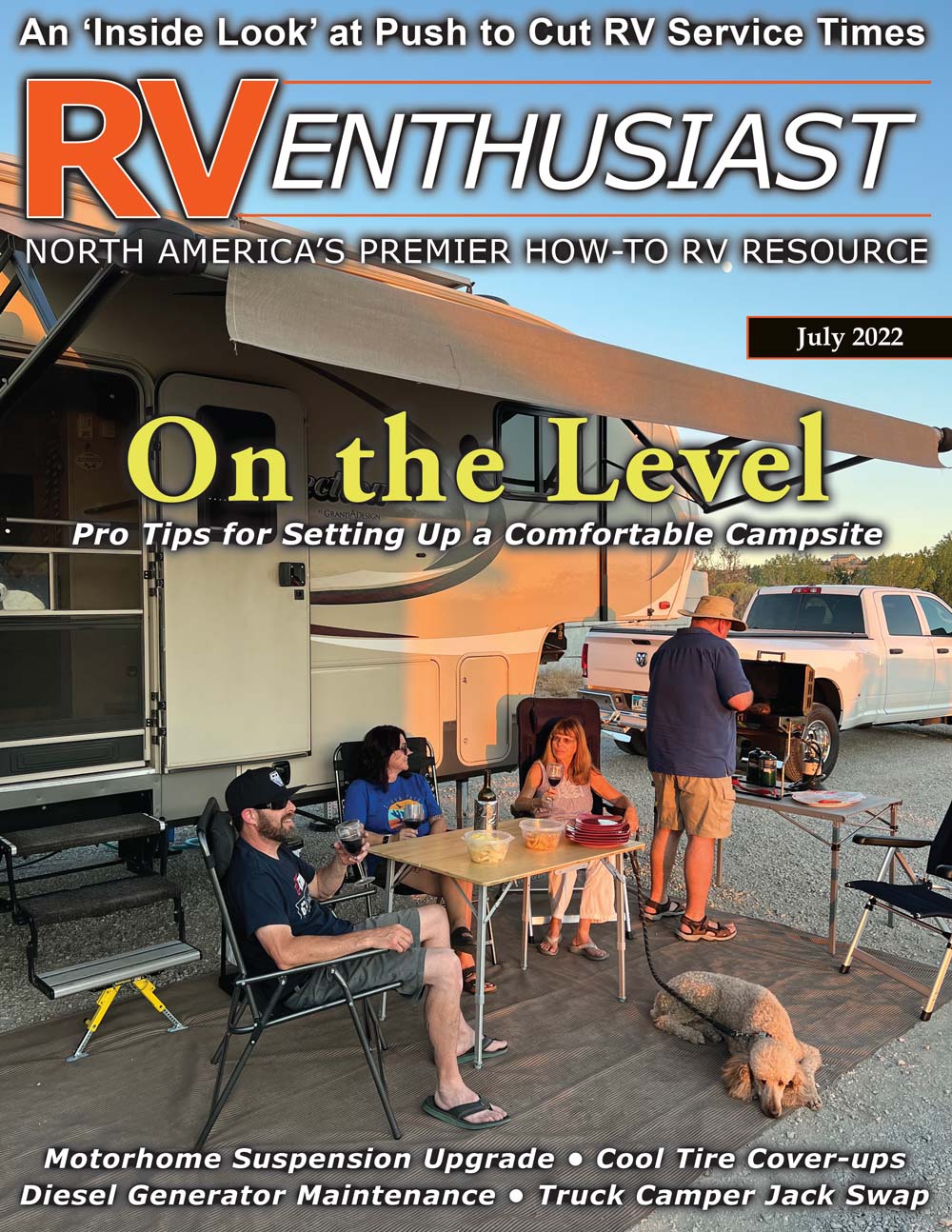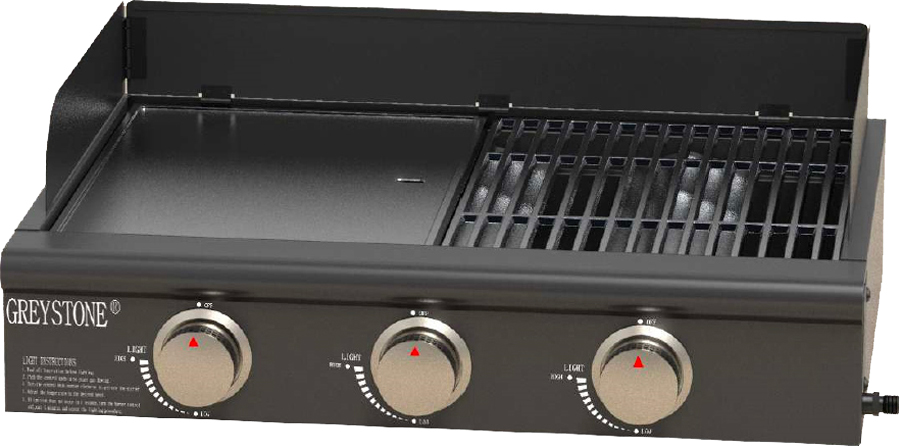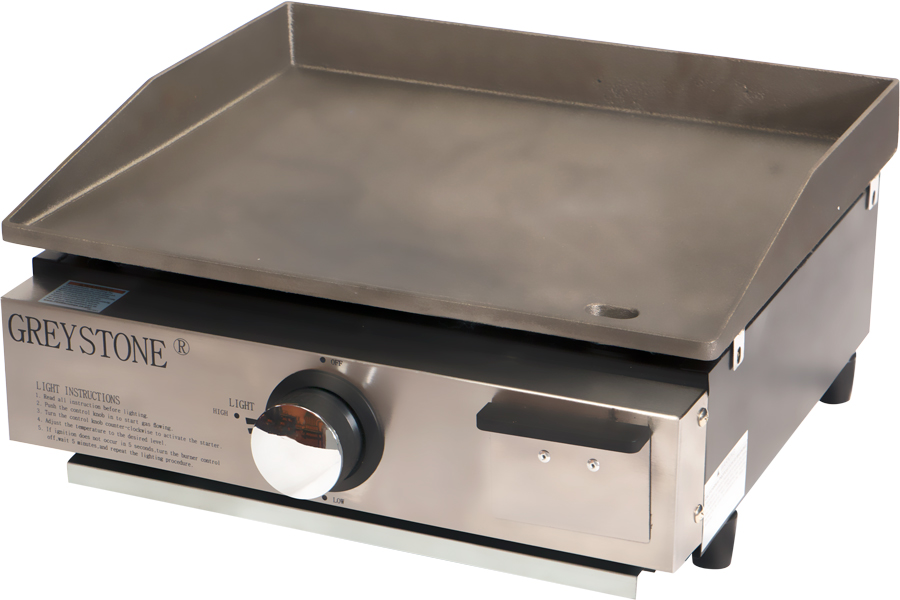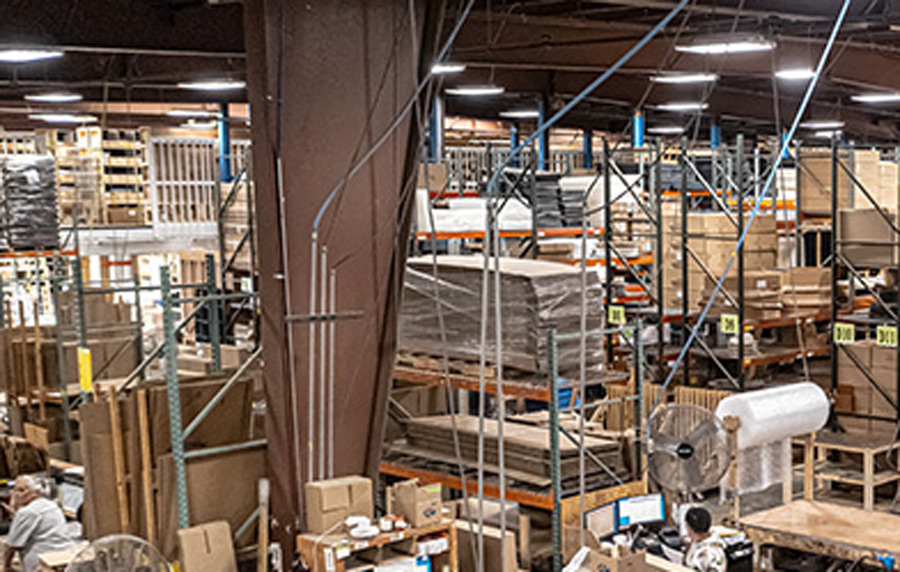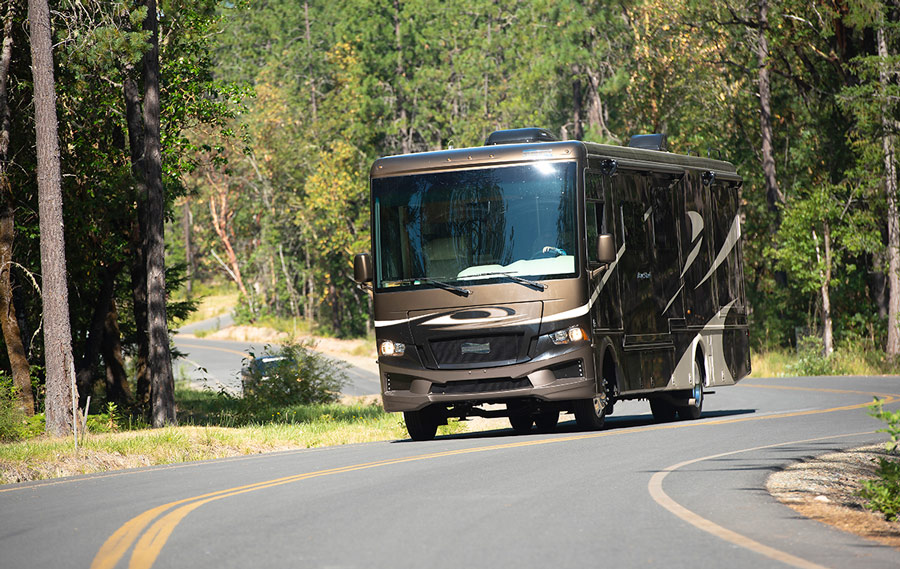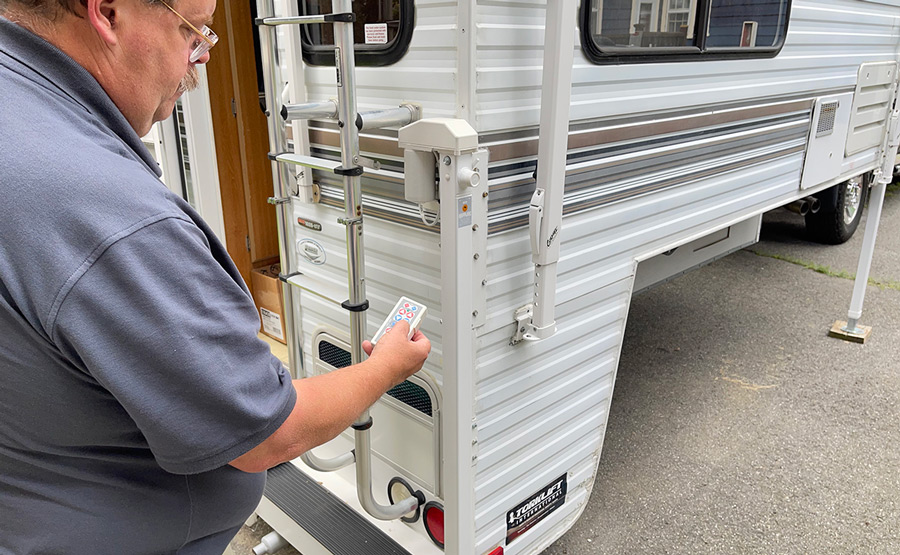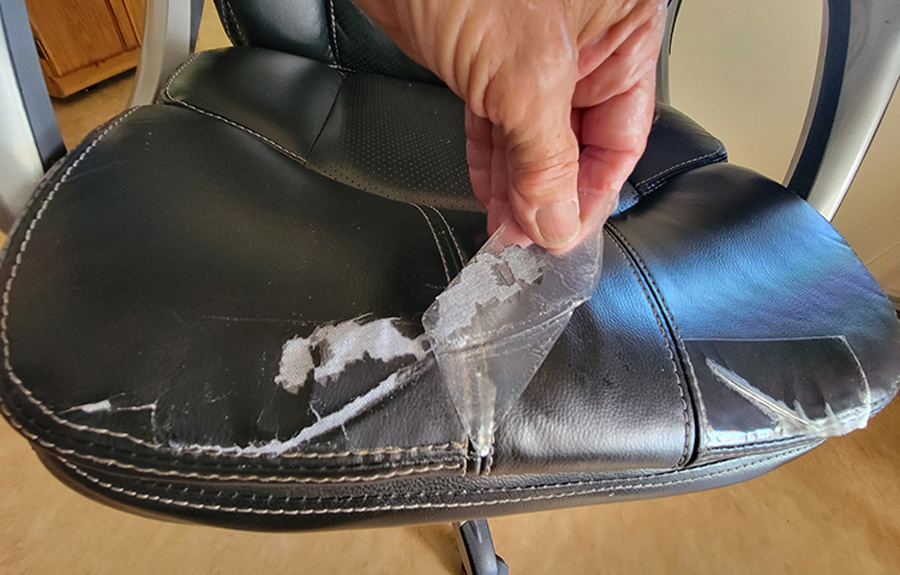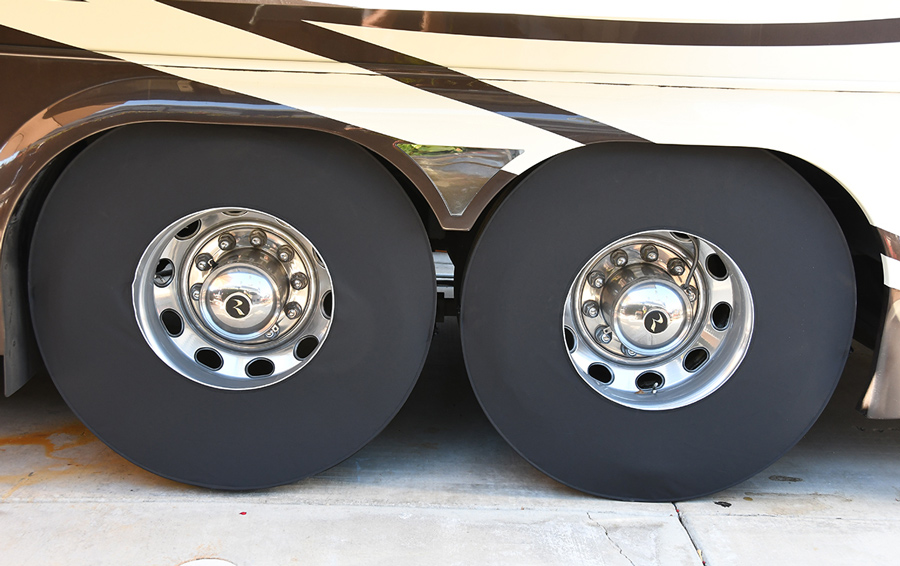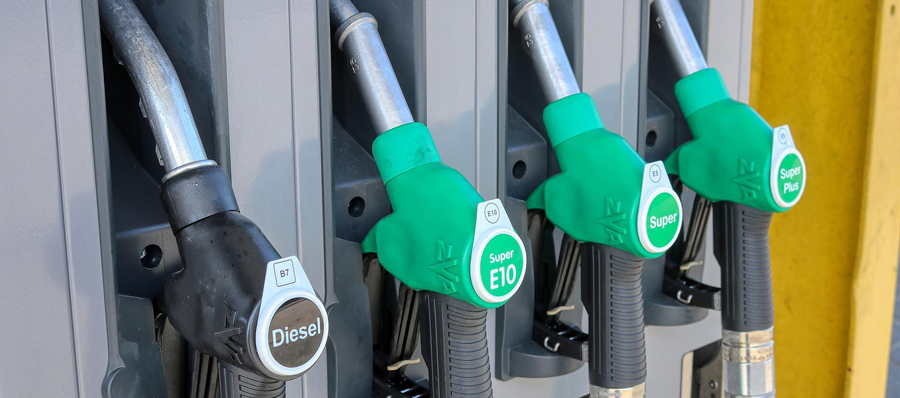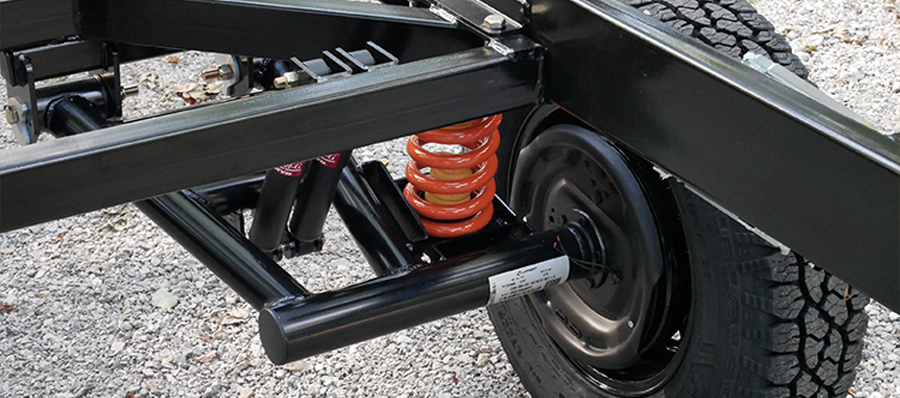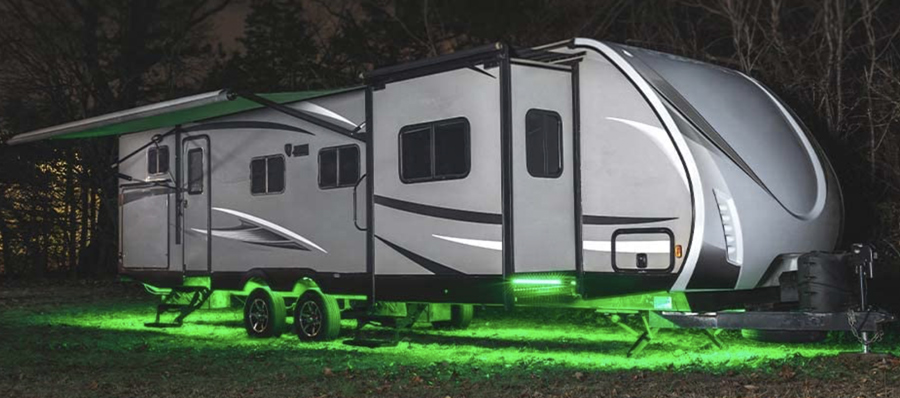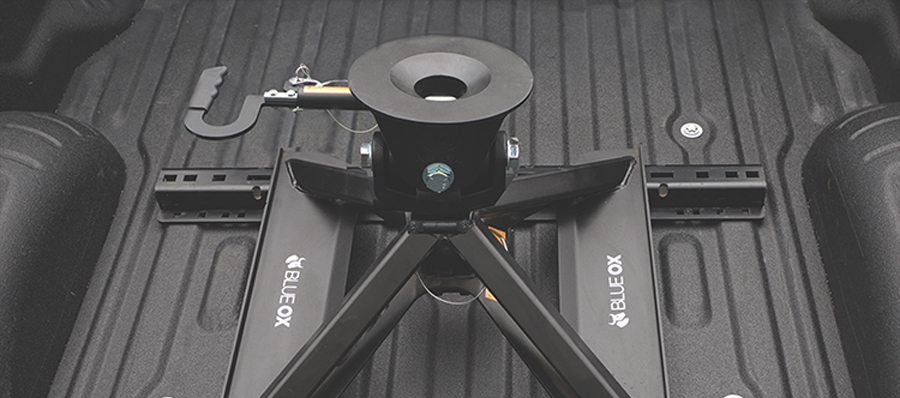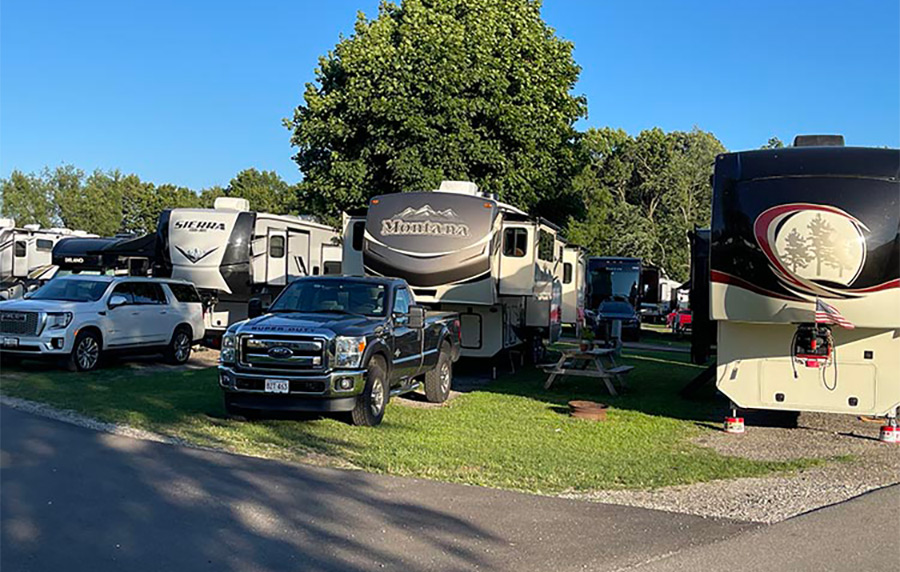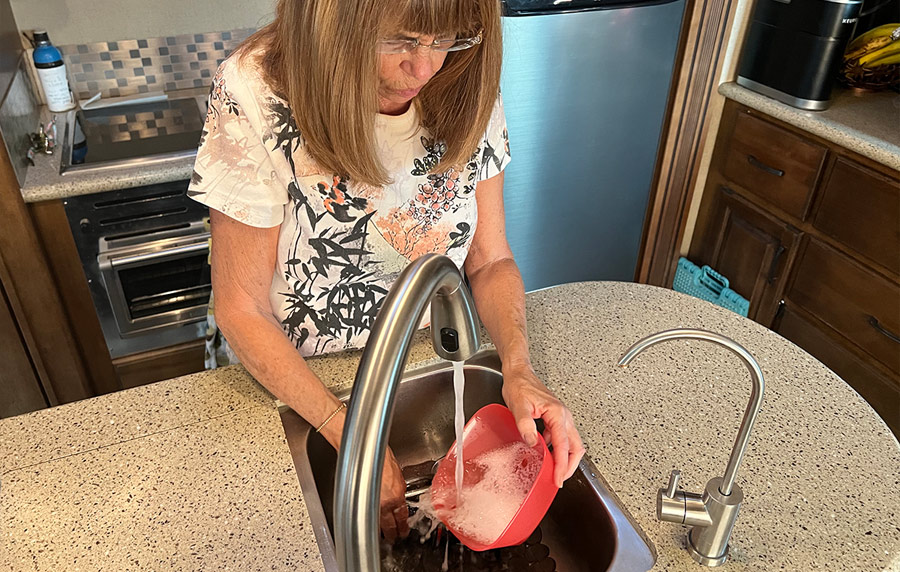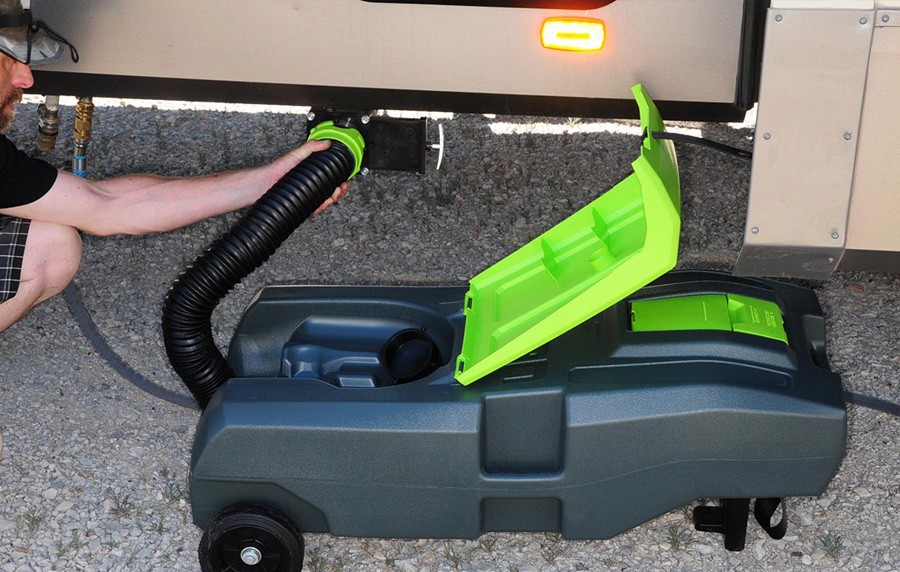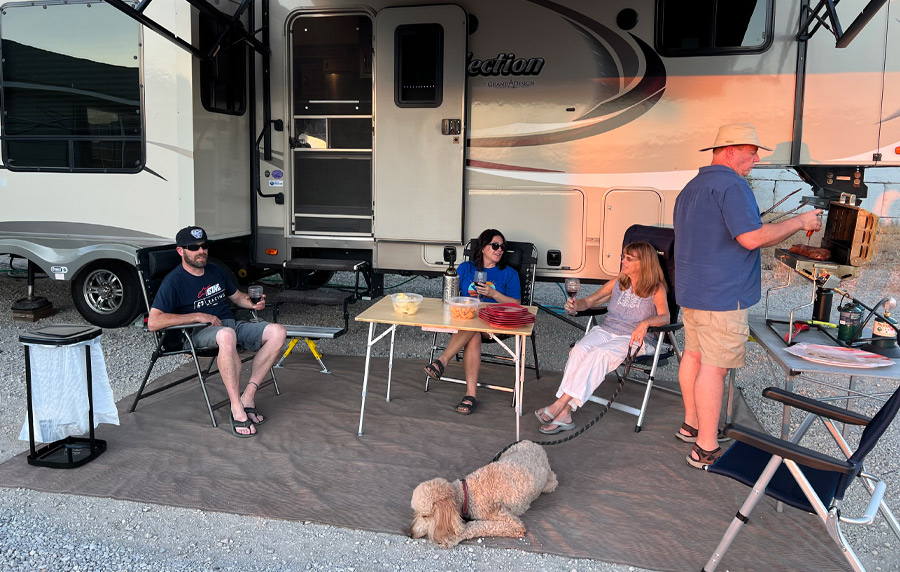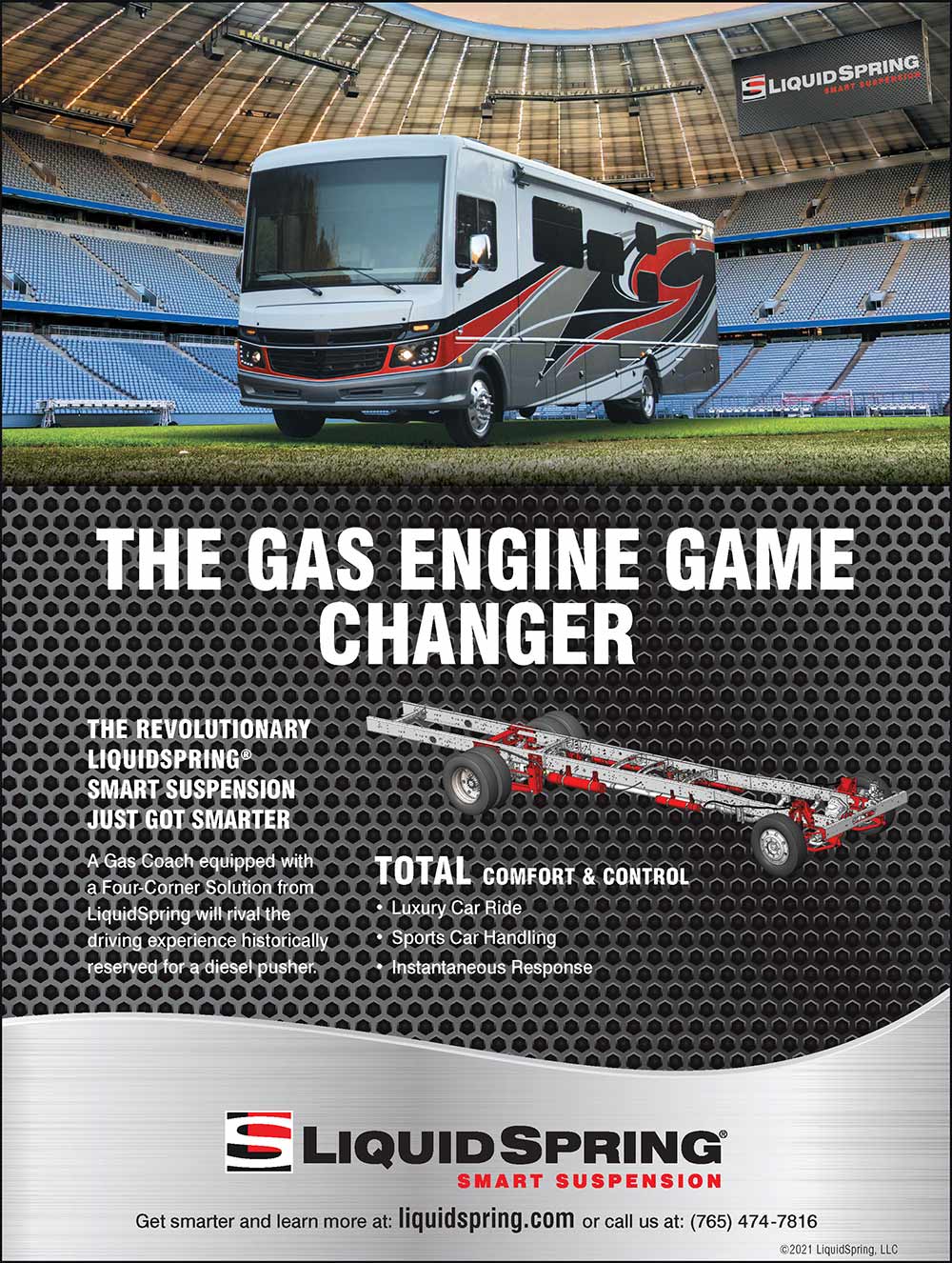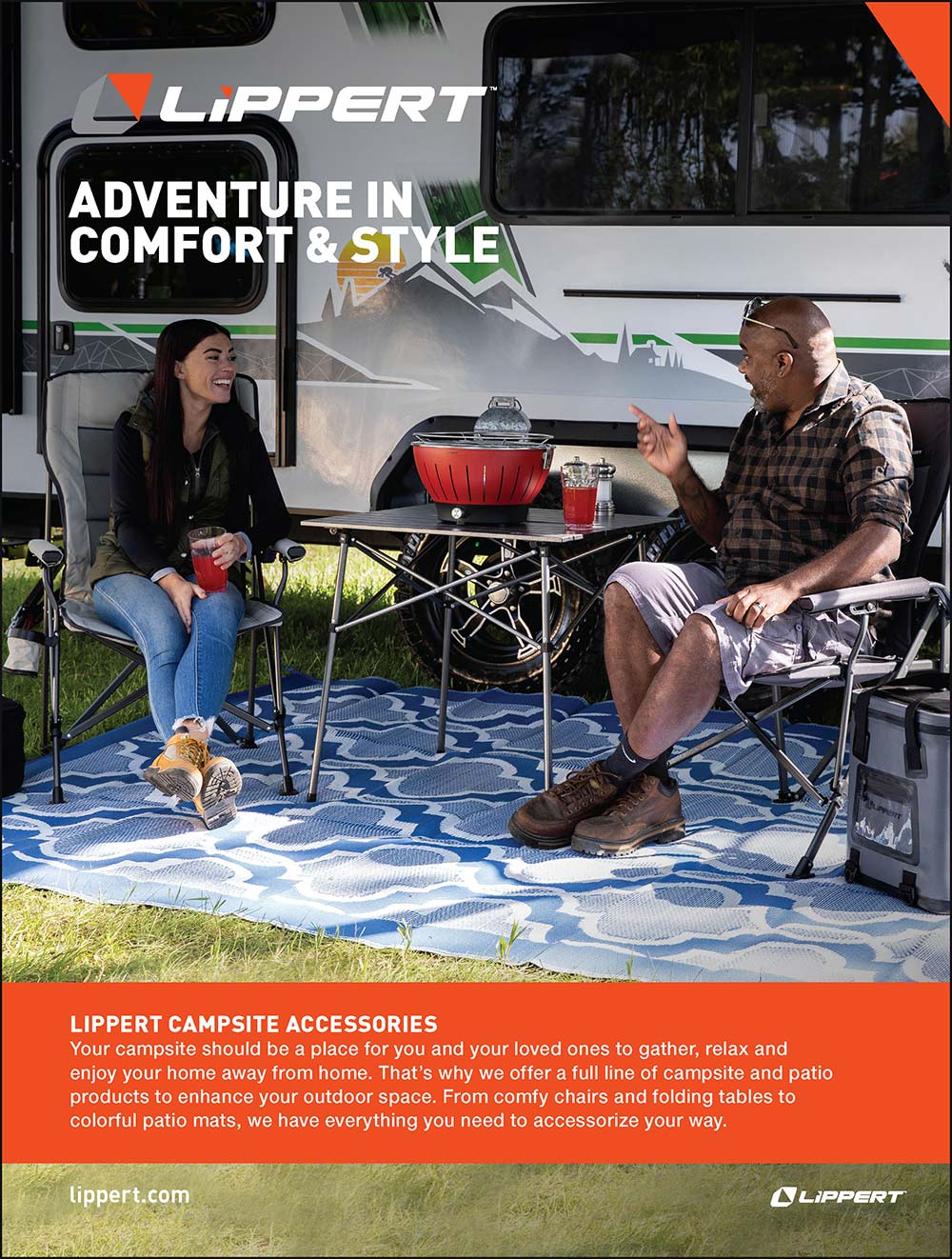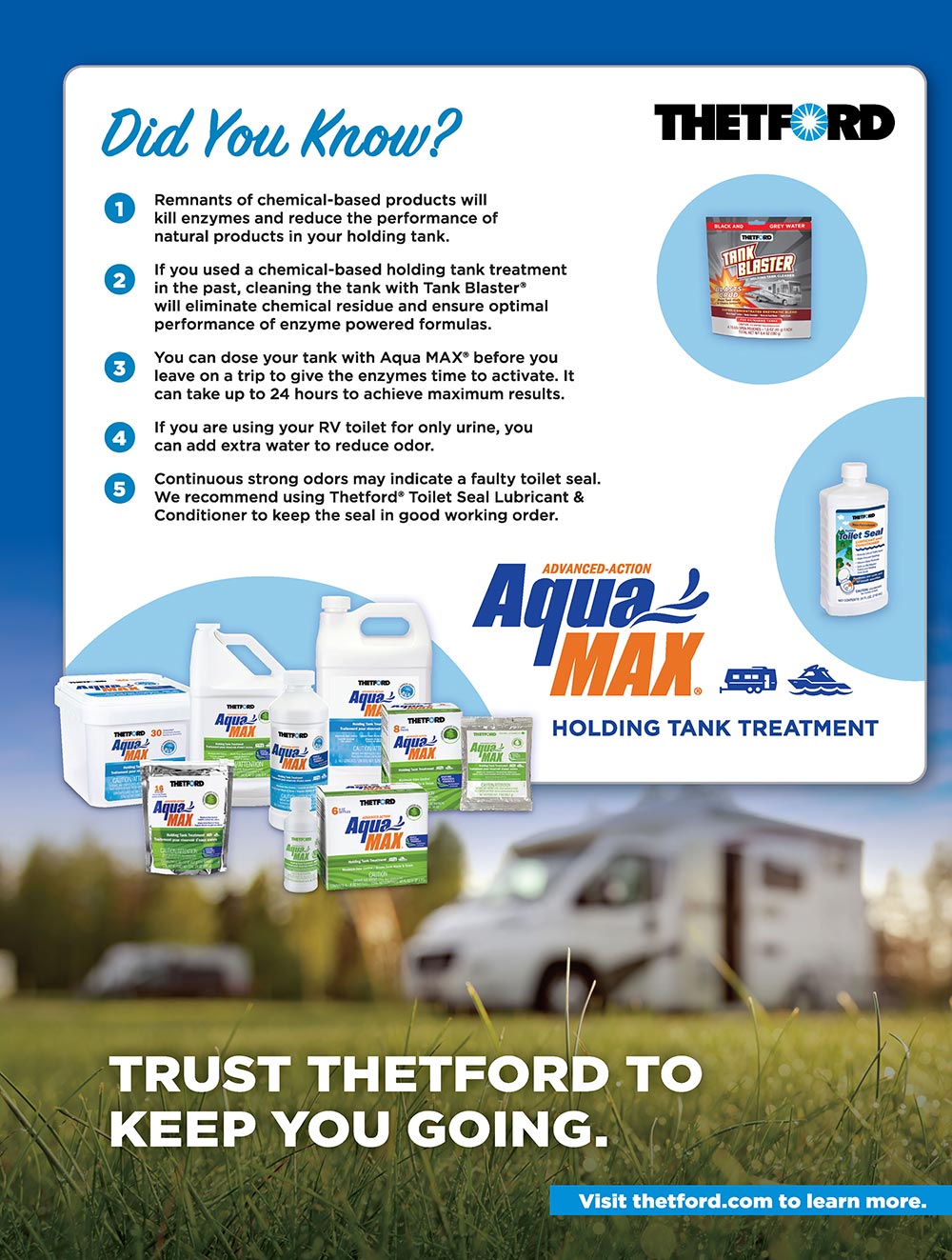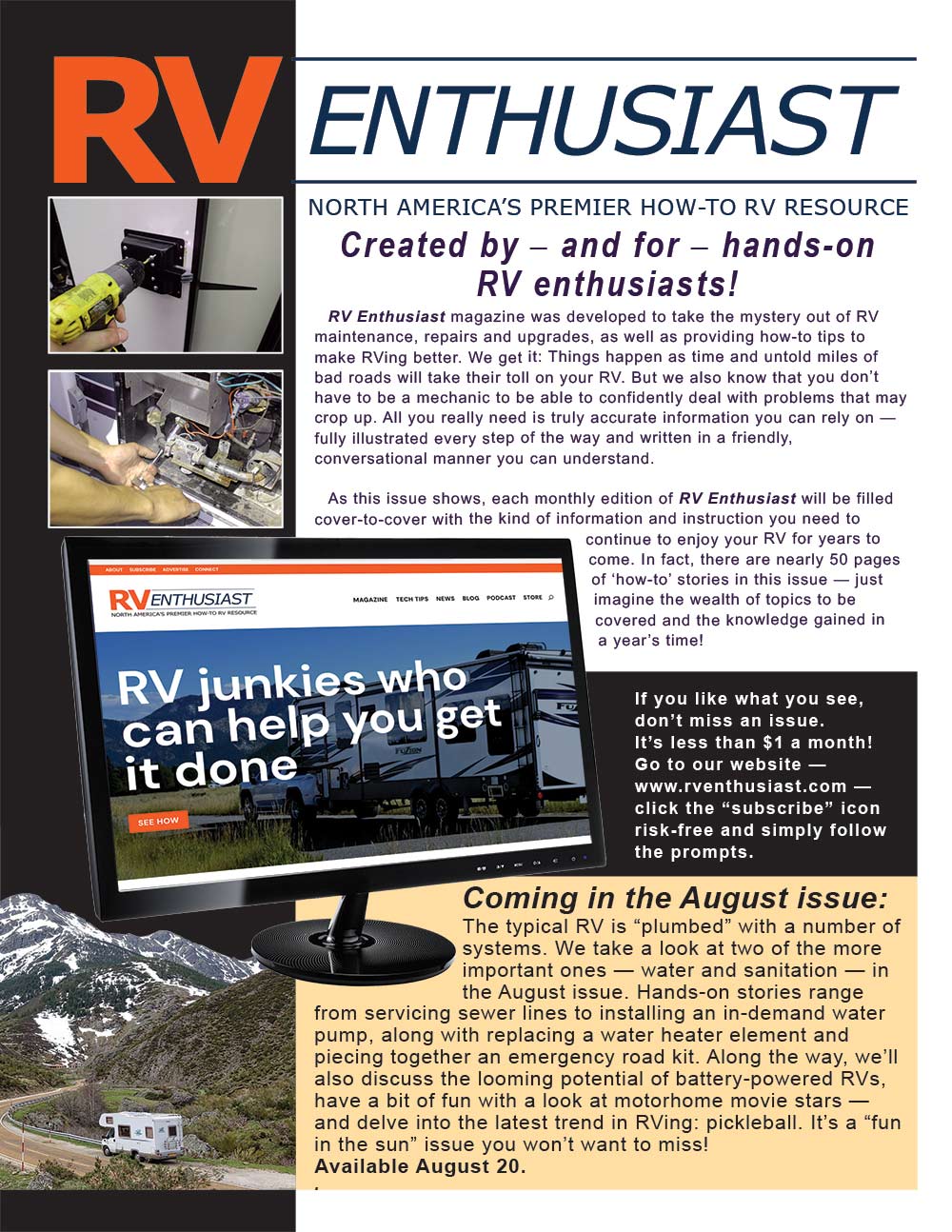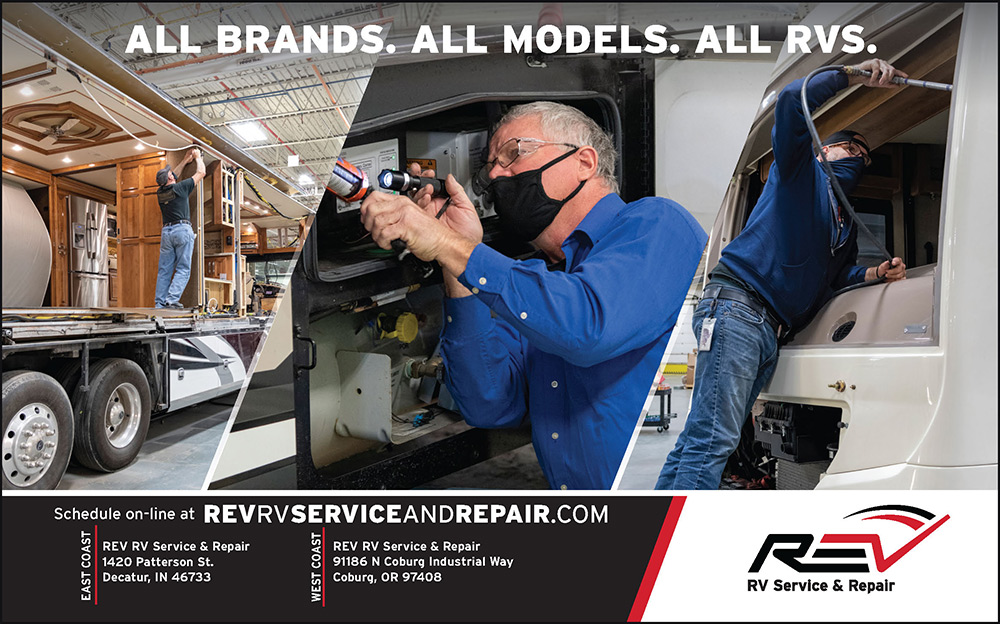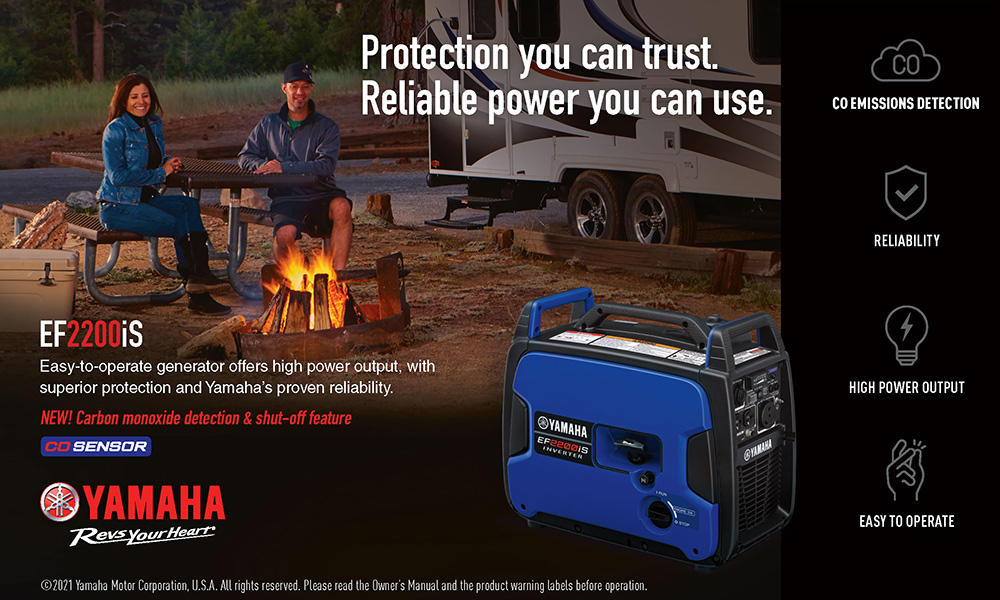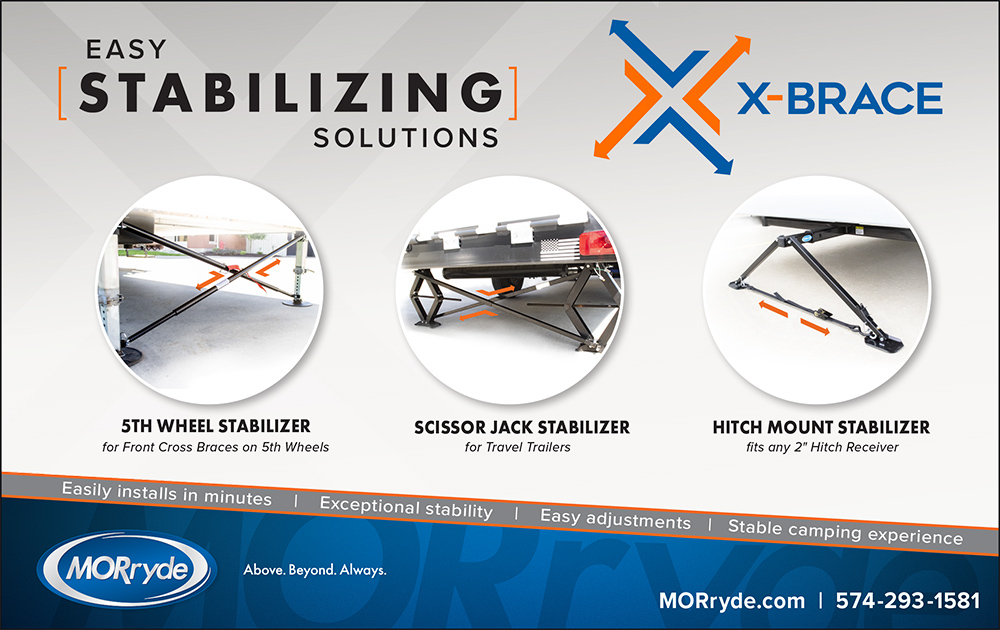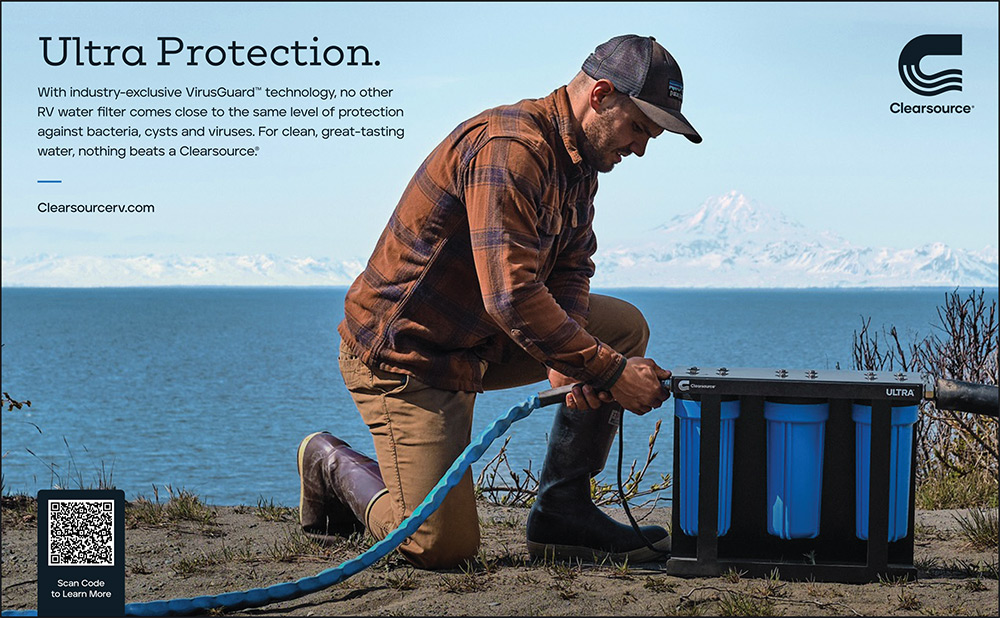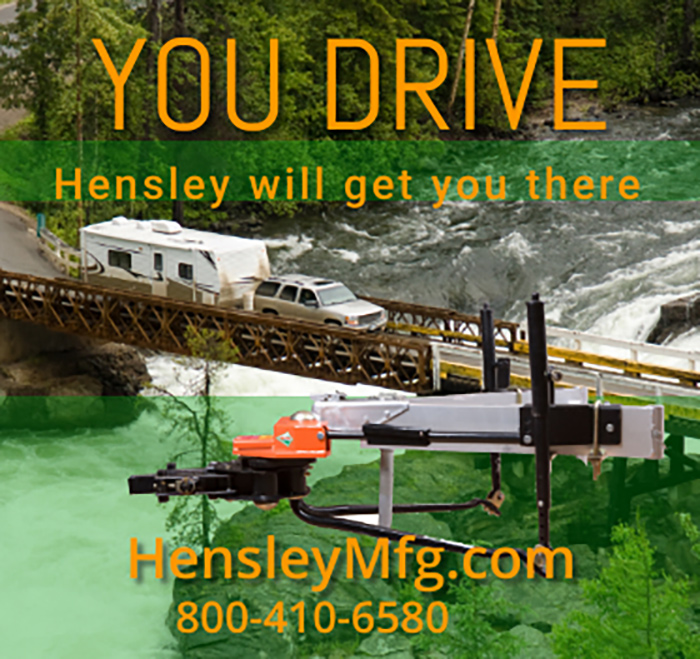Subscriber Access Only
Special Offer
Get 1 year of RV Enthusiast Magazine for just $9.99
Unlock My Offer No ThanksAlready a subscriber? Click here to access full issues.
- Multiple cooktop surfaces in one compact griddle
- Available in 17” and 25” models to fit needs of all sizes
- Simple installation — just needs a gas hook-up — and easy to store
- Interchangeable cast iron flat-top griddle and grill grates for different cooking options
- 15,000 BTUs of output for high heat cooking
- Easy to hook up for outdoor RV kitchens
- Over 250 square inches of cooking area: perfect for preparing full meals for family and friends

Manufacturers, suppliers, parts wholesalers and dealers have invested heavily in programs intended to get RV owners back on the road.
One of the most common complaints from gas Class A motorhome owners is loose, vague steering that requires constant adjustment. Here’s how to improve tracking — and handling.
Replacing worn corner jacks on a truck camper will simplify and improve the loading-and-unloading experience — especially if your jacks have seen better days.
The AC generator is really nothing more than a small garden tractor engine — and keeping it in top shape doesn’t require much more than a few tools and some time.
The thought of parting with a chair or couch that has offered the utmost in comfort can be disappointing. Fixing worn fabric with a self-adhesive patch kit might save it.
Protecting the tire sidewalls on your RV is important — continued exposure allows the sidewalls to bake in the sun. These clever tire covers fit with virtually no effort — and look cool.

Creating an atmosphere that exudes comfort and utility is a big part of the RV experience. Transforming your space into your personal hideaway starts by hooking up correctly.
You should never plug in an RV before establishing whether the power is “clean.” Here’s how to test your shore power connection — and protect your RV from inconsistent voltage.
You should never plug in an RV before establishing whether the power is “clean.” Here’s how to test your shore power connection — and protect your RV from inconsistent voltage.
Dumping the holding tanks isn’t the most fun you can have camping — but it need not be a cringe-worthy exercise. Here’s how to deal with “waste management.”
A few thoughts on Wi-Fi — which has never been more important in the era of remote employment and social media — and the lost art of campground etiquette.
All the work you’ve put into creating a well-though-out campsite doesn’t matter if you don’t enjoy it. Here are a few products we’ve found that make the experience more comfortable.
(805) 320-6909
[email protected]
EDITOR – Bruce Hampson
(574) 584-4616
[email protected]
TECHNICAL DIRECTOR
BILL GEHR
(805) 340-5015
[email protected]
ART DIRECTOR – MIKE ACCUARDI
[email protected]
26362 Douglas ave., Elkhart, in 46514
 AFFILIATE NOTICE: RVE Media Group LLC provides links to vendors and products, such as an Amazon Associates account, for informational purposes, but that may provide a commission if you purchase from that link. We often label these links with language that provides transparency if the destination is an advertiser, affiliate, or partner. Products are often provided to RVE at little/no cost for editorial testing purposes by vendors/suppliers. Under no circumstances does this affect the results of the test or install as published in RV Enthusiast. Sponsored content is identified as such directly on the content.
AFFILIATE NOTICE: RVE Media Group LLC provides links to vendors and products, such as an Amazon Associates account, for informational purposes, but that may provide a commission if you purchase from that link. We often label these links with language that provides transparency if the destination is an advertiser, affiliate, or partner. Products are often provided to RVE at little/no cost for editorial testing purposes by vendors/suppliers. Under no circumstances does this affect the results of the test or install as published in RV Enthusiast. Sponsored content is identified as such directly on the content.
PRIVACY POLICY: Our complete privacy policy can be found at https://rventhusiast.com/privacy-policy/
t seems like eons since the cost of gas and, especially, diesel, was at a level that encouraged travel. Given all the craziness that we’ve experienced of late, though, it’s easy to lose track of time. Heck, I can recall sending a photo to my friends in February 2016 showing a Marathon fuel station sign in northern Indiana with a gallon of regular gas at $1.48 atop a price of $.99 for fresh coffee. My caption? “A cup of Joe is almost as expensive as a gallon of gas. Who woulda thunk it?”
As recently as 2020, the average cost was less than $2.25/gallon. A year ago? $3.15.
Look at us now.
Even with recent price drops in early summer 2022, the Automobile Association of America (AAA) pegged current national average prices in mid-July at $4.65 (gas) and $5.62 (diesel). The key word here is “average” — drivers in some places (like the entire West Coast) would be ecstatic to only be paying those costs.



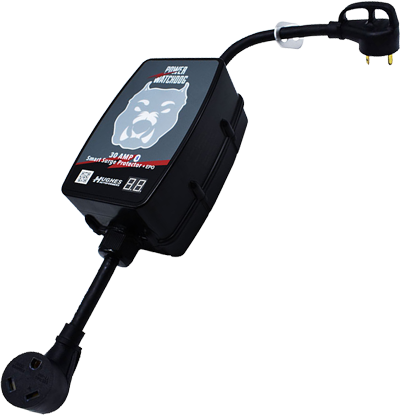
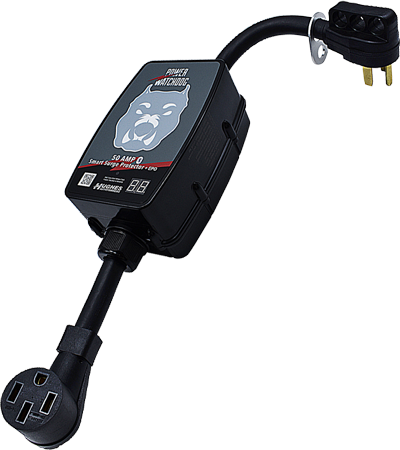
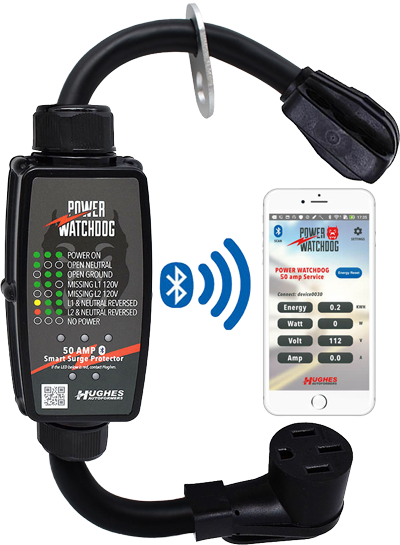
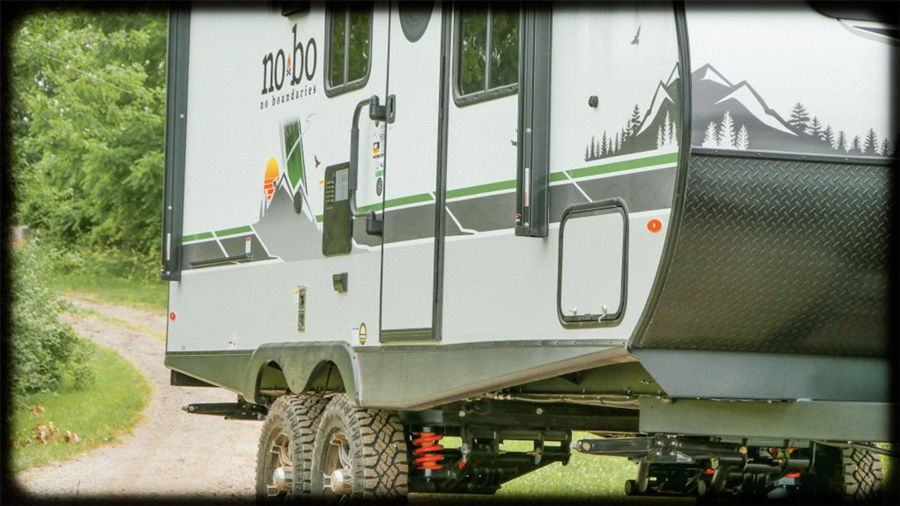
The axles.
The lineup has been made even more nimble with the addition of the CURT Independent Suspension System, which is included in No Boundaries’ new Beast Mode package. The axle-less design allows for complete independent movement of single or tandem axle wheels. The nitrogen filled shocks, along with the racing-inspired coil springs, are said to deliver a towing experience like nothing else currently in today’s market.
“The ground clearance and articulation of the product set it apart in a category all its own,” said Cody Schade, No Boundaries product manager, “but the absence of vibration and rattles on long trips and various terrain offer a level of comfort and confidence not currently found in any other towable product.”
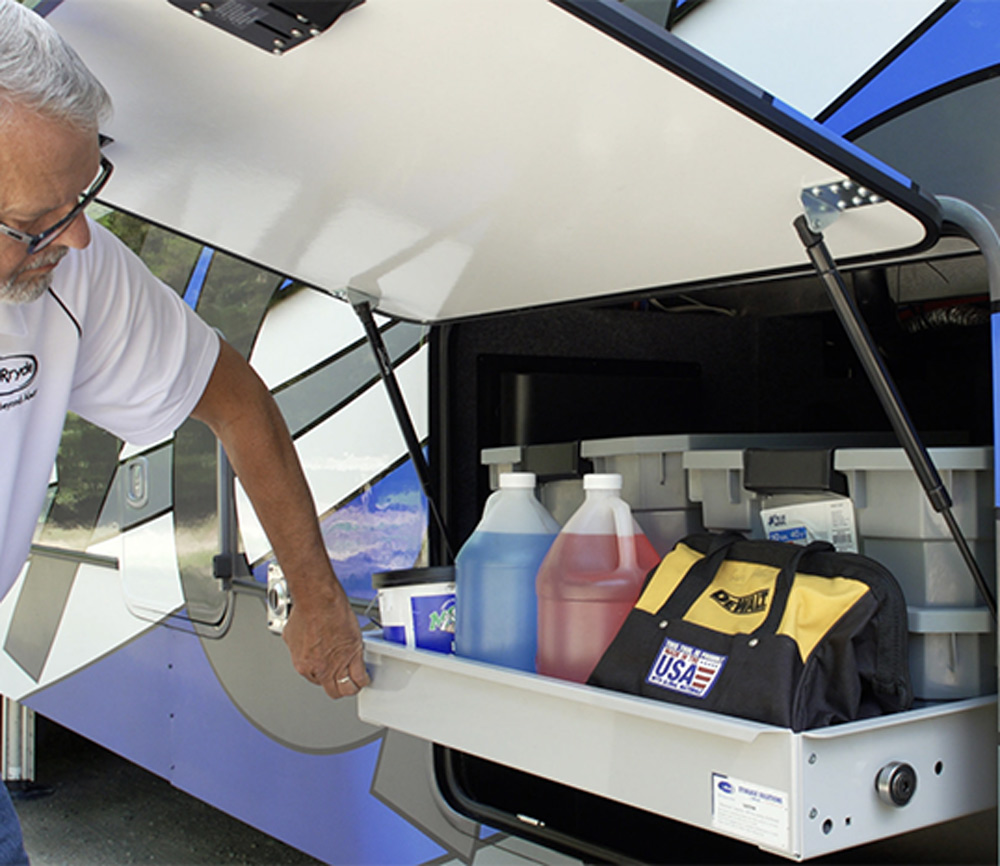
— Lloyd Stephens
Lloyd, as an owner of a big fifth wheel with a huge storage compartment, I feel your pain. Fortunately, I’m tall enough to make it a little bit easier for me to get in there — but I still have to get on a stool once in a while to reach the center of the compartment. There are several cargo trays that are available, models that are anywhere from light to heavy duty. I suggest looking at a heavy-duty product since most owners tend to load in more poundage than expected — or willing to admit to. I think most RVers must be pack rats.
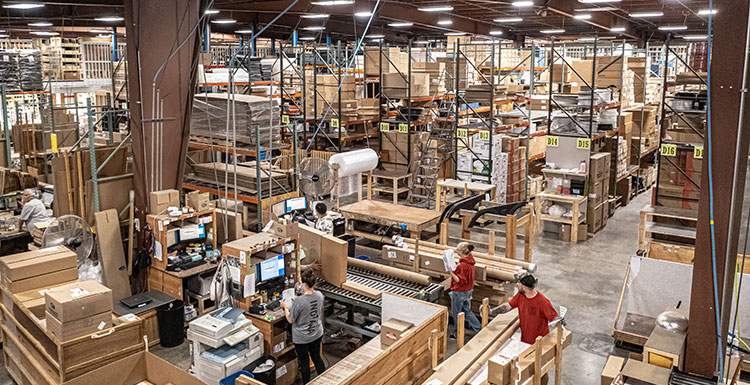
here’s probably nothing worse than making a purchase — especially a purchase as substantial as an RV — and not being able to use it. And it happens, more frequently than anyone would like. Subject the array of complex systems found on a typical RV to the incessant pounding caused by poor road surfaces and it’s virtually a guarantee that, at some point, RV owners will find themselves trying to schedule a service appointment at the local RV dealership.
And that’s when things can really get frustrating. The now two-year explosion in the popularity of RVing, created in no small part by the pandemic, has exposed what’s historically been the weak link in the RV lifestyle: the ability of the industry to provide service after the sale. Among owners unable to make their own repairs, complaints of having to wait six to eight weeks for service are not uncommon.
Clearsource
Lance Camper
Lippert
United States Warranty Corporation
Way Interglobal
Advertise Today
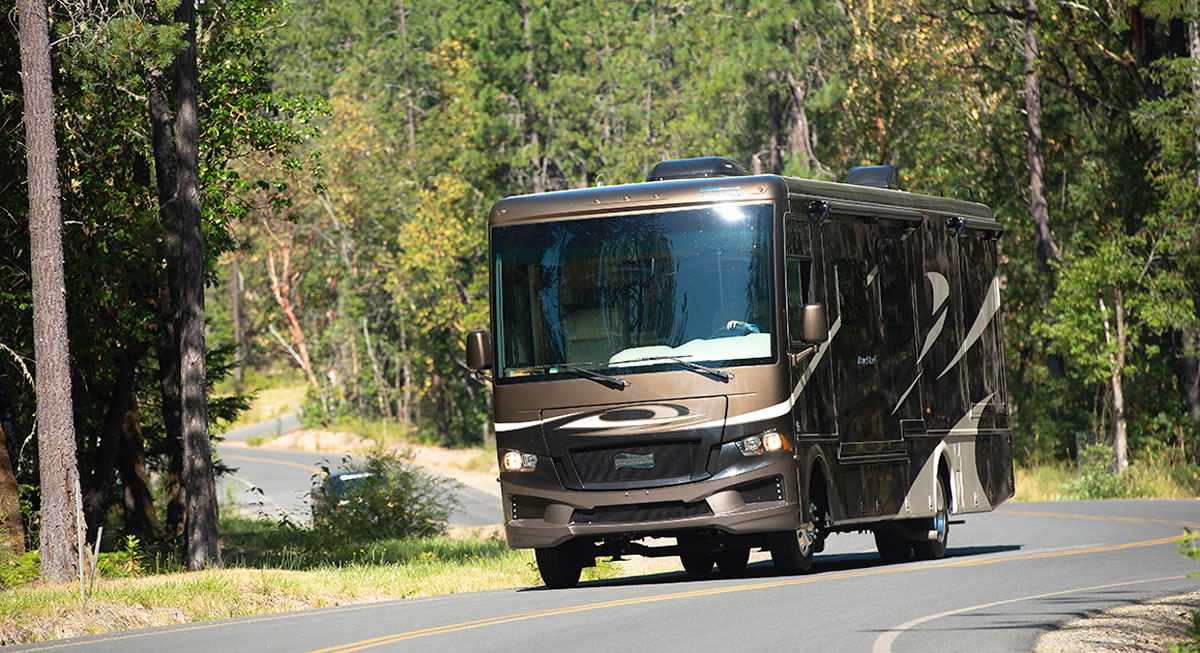
ne of the most common complaints from drivers of gas-powered Class A motorhomes is loose, vague steering that requires constant “sawing” of the steering wheel — the need to make continual little steering corrections to keep the big coach tracking correctly as it’s driven down the highway. As might be expected, this leads to driver fatigue and a constant rocking motion inside the coach that also impacts passenger comfort.
Most motorhome owners attribute such steering “play” to the steering system — either a steering box that’s going bad or looseness in the steering linkage. But those are wrong assumptions. The steering components are not the culprit on motorhomes based on the popular Ford F-53 chassis that is under nearly all Class A coaches built in the last dozen years. It’s an issue with movement in the front leaf springs.
etting up the comfortable campsite has a double meaning. Most people will focus on the patio, adding a patio mat, the right amount and style of chairs, tables, a barbecue and other items that complement the setting. But, there are the nuts-and-bolts components that allow the RV to function like a home without missing a beat when it comes to convenience. In RV circles, that means hooking up the right way. While the Internet offers plenty of ways to do that, we’ll show you how the pros do it — and we’ll even throw in a few tips for those who shun hookups for a more natural experience.
Let’s Get Oriented
It may seem obvious, but not all campsites are created equal. If possible, ask to see the site first — especially if the grounds are dotted with trees and bushes that can play havoc with the awning and slideout toppers, potentially scratching the sidewalls and creating a mess on the roof that will need attention before leaving the park. Or worse. Last year, we stayed in beautiful RV park with lots of tall pine trees. Our friends in a nearby site woke up one morning to a smashed windshield in their dinghy vehicle, caused by a wayward pinecone that descended from an overhead tree. In this case, the park managers contended that the park was not responsible for damage because it was an act of nature. Our friends will never return to this park, but a little espionage before heading out to the site could have circumvented that situation.
ooking up to 120-volt AC power seems like a no-brainer, but there are a few precautions that should be taken before plugging in the power cord. First, you should determine the quality of the power — meaning, is the voltage at a proper level and is the wiring correct? Utilizing a surge protector is paramount, and most of the newer devices have multiple protection segments. The better ones, like the Hughes Watchdog (hughesautoformers.com) have a delay feature that surveys the connection and will provide an “all’s clear” signal (and connect) if the power is safe for the RV. The Hughes surge protector is very sophisticated and offers Bluetooth connectivity to a smart device.
You should never plug in an RV before establishing whether the power is “clean.” If you don’t have a surge protector, at least use a multimeter or commercial monitor to make sure there are no issues with the power. If using a multimeter, make sure the probes are in the right position for an accurate voltage measurement. To check voltage on a 50-amp receptacle, put one probe in the bottom vertical slot and the other probe in one of the other vertical slots. After you get that voltage value, move the outside probe to the other outside vertical slot and read voltage again. Voltage should be similar. For a 30-amp circuit, put the probes in the opposing slots and read the voltage.
n most cases, the water and sewer hookup in RV parks are in close proximity of each other. There are logical reasons for this, including convenience when building out the sites, but there’s a downside to this arrangement: It’s easy to contaminate the water spigot with wayward waste — especially when the water is used to final flush the dump hose. Before initially connecting a water hose, spray the spigot with at least 70% rubbing alcohol or a mixture of bleach and water.
Always use a hose designed and dedicated for water service to the RV, either via the city hookup or when filling the onboard tank. These hoses, marketed for RV use, are free of polyvinyl chloride, BPA (chemical used for making items out of plastic), lead and other toxic materials. We all drank out of green garden hoses when we were kids, but now that we know better, these hoses should be reserved for draining gray water and/or cleaning out holding tanks. Fortunately, there are numerous hoses — even those not marketed exclusively for RV use — that are clearly marked as safe for drinking.
o one brags about how much fun it is to dump the holding tanks, but it’s a necessary evil if you’re going to be an RVer. If you spend most of your time in RV parks with full hookups, the process is somewhat more tolerable, but those of us who like primitive camping have a whole other set of parameters to deal with when it comes to waste management.
Using the right equipment will make your stay more pleasant and there is plenty on the market to choose from — just don’t substitute quality to save a few bucks. High-quality sewer hoses, preferably those that will “stretch” out and retract into shorter lengths, are typically easier to handle. Screw-on fittings are much more convenient nowadays, but always carry a few hose clamps just in case they decide to leak at some point.
ood Internet access can make or break a trip these days. Most people suffer withdrawals if they cannot stay connected and communicate with others, while others must rely on the Internet while conducting business on the road, and there are those who have transitioned to streaming entertainment.
Unfortunately, the RV park industry is moving slowly in providing Internet access that’s robust enough to handle streaming by campground residents. There are myriad Wi-Fi and cell service extenders available to mount permanently on your rig. A few manufacturers are even offering this specialized equipment as an option, and some are making boosters standard fare. weBoost (weboost.com) is one of the most popular aftermarket suppliers of signal boosting equipment, with products designed for just about any RV traveler. Also, installing boosters that will bring in weak campground Wi-Fi signals are popular and, although they improve service strength, streaming is still not practical — or allowed — in many RV parks.

bviously, all the work you’ve put into establishing a well-thought-out (and equipped) campsite doesn’t mean beans if you can’t enjoy the fruit of your labors. Everyone has their own ideas as to what constitutes comfort while on the road, from chairs around a fire to what you’ll use to cook your next meal outside and how you’ll set up your outdoor dining table. Here are a few products we’ve found that make the camping experience more comfortable, whether you’re at an RV park or boondocking. Will you add to them? Of course you will — that’s part of what makes camping so much fun.
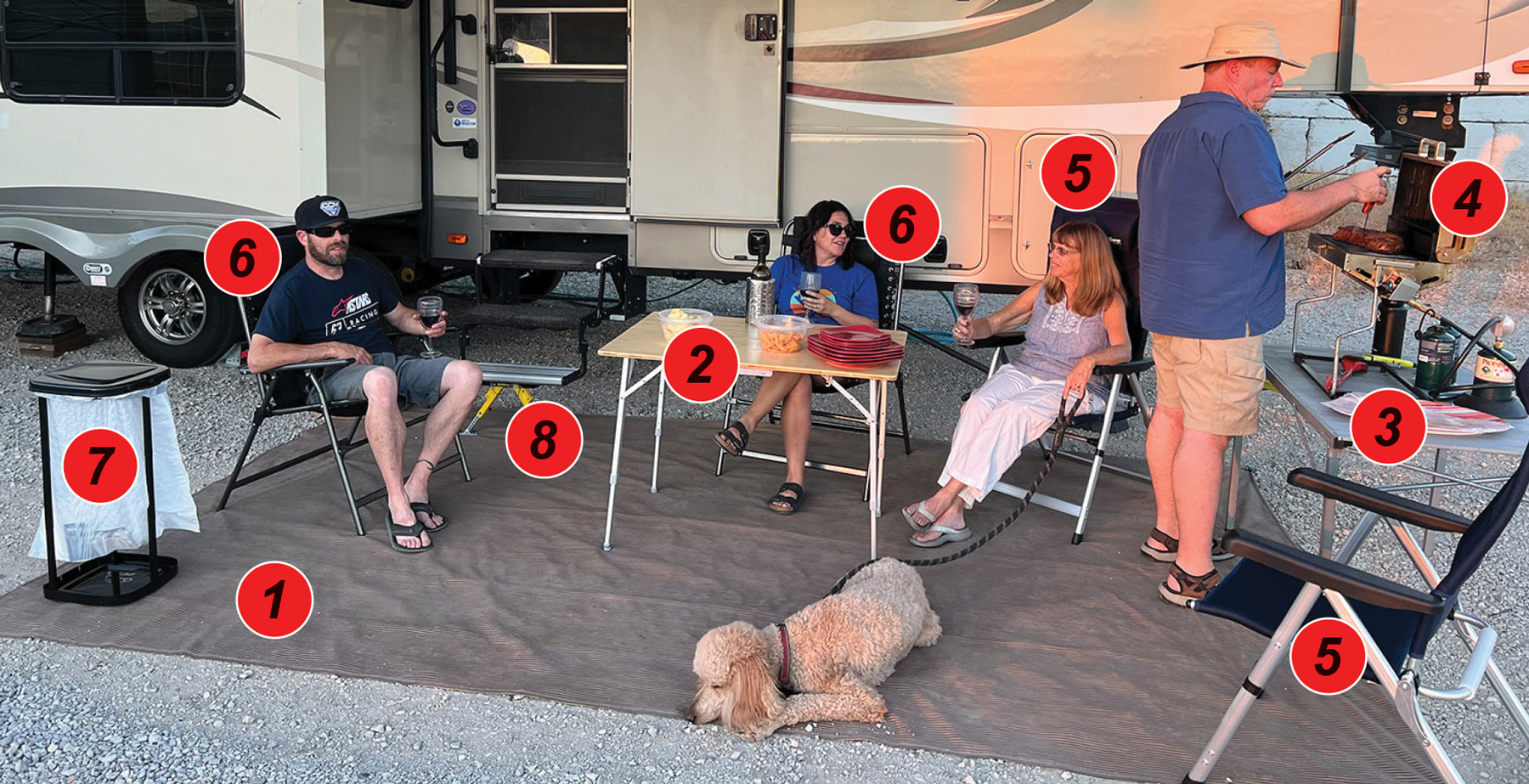
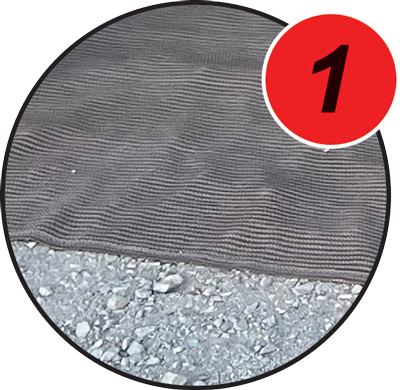

The new Happijac camper jacks on our 2005 Lance made a big difference in strength, appearance and lifting capacity.

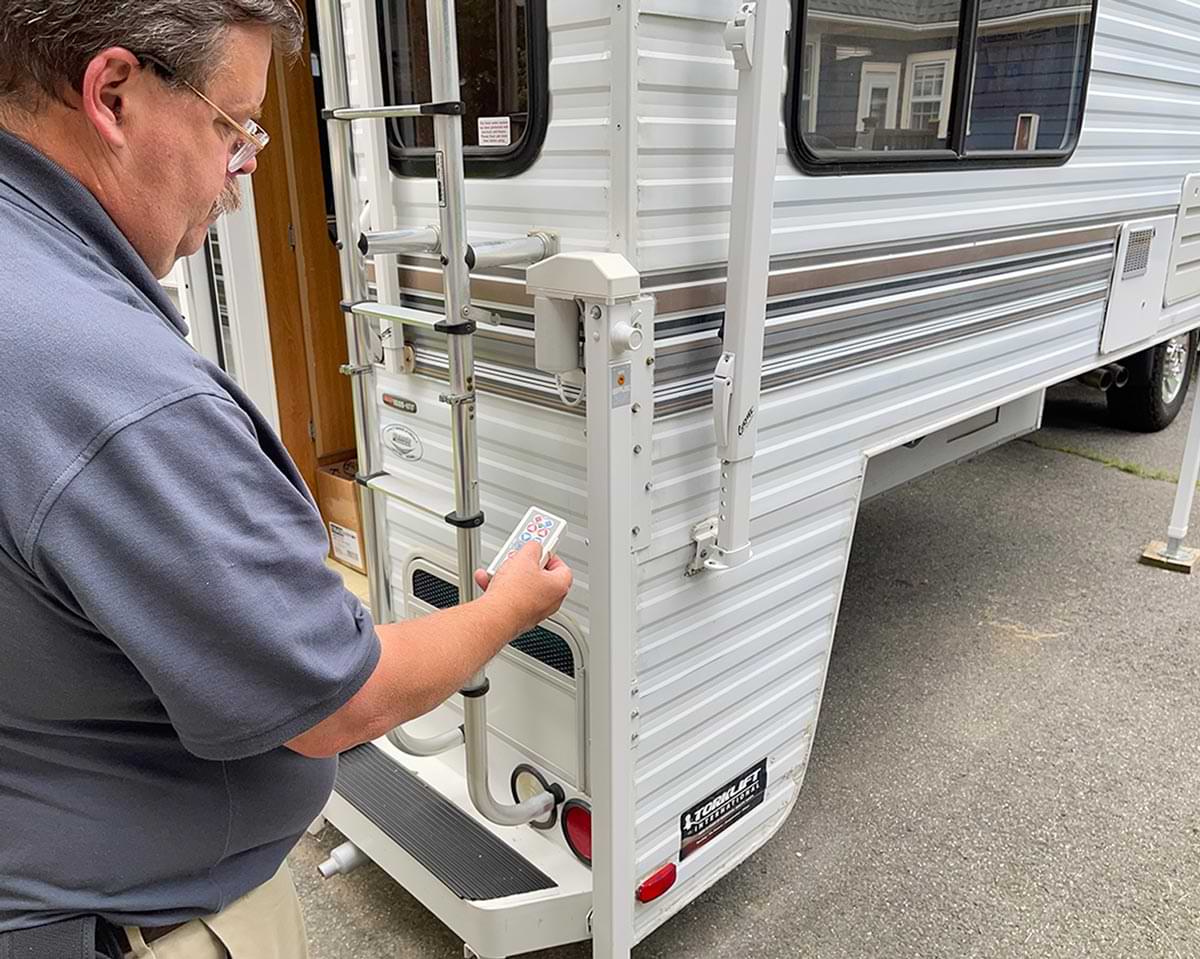
et’s be clear from the outset: corner jacks on a truck camper aren’t the coolest items on an RV enthusiast’s “must have” list. They are, however, among the most practical — especially if you have an older but much-loved truck camper with electric or manual corner jacks that have seen better days and are in need of an upgrade.
That was the scenario confronting us with our 2005 Lance makeover project — and we can tell you that, yes, it can be done, it’s worth it, and you can do it yourself at home.
Generator Maintenance
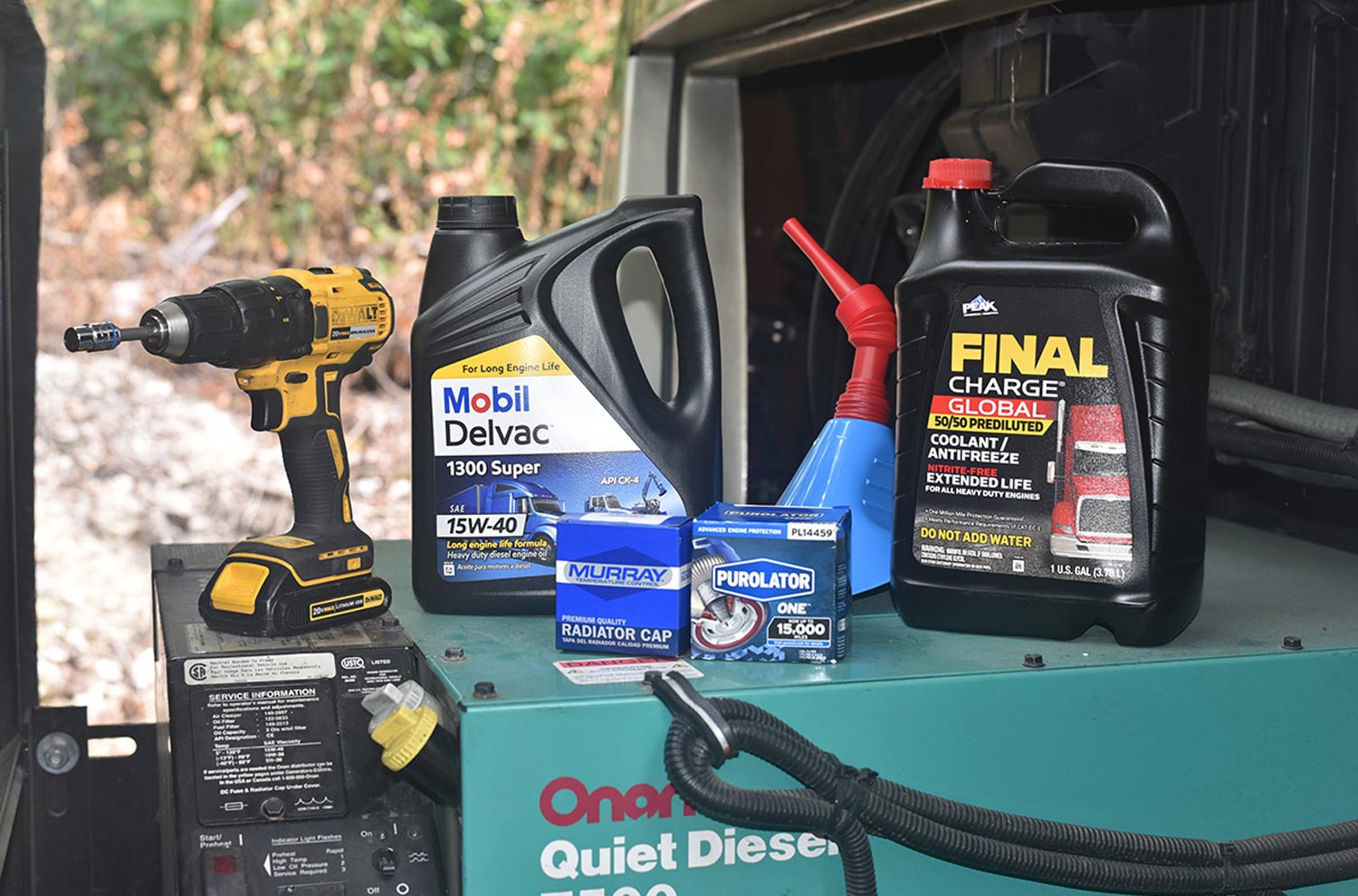
Generator Maintenance
eeping the AC generator running while traveling is a very important part of any motorhome trip. Even if you usually stay at campgrounds with full electrical hookups, the generator still has an important function. Many owners use the generator while driving to keep the rooftop air-conditioners and the refrigerator going. In hot weather the dash A/C unit is not usually capable of keeping you cool while driving, so the generator becomes not only necessary but a more practical option of cooling your motorhome.
And, it does so on a reliable basis — so long as you maintain the genset and perform service on a regular schedule. None of the requisite maintenance items for a diesel generator — changing the oil and oil filter, cleaning the spark arrestor and changing the air filter and the fuel filter — is especially taxing, but kept up to date, such maintenance will help to ensure that when you hit the “start” button it does what you want. To help guide you in the process, we’re going to illustrate what each step requires; in addition, we’ll show how to drain and flush the radiator and replace the coolant. Each of these service items have a schedule in the Onan owner’s manual so you may not need everything we are doing.
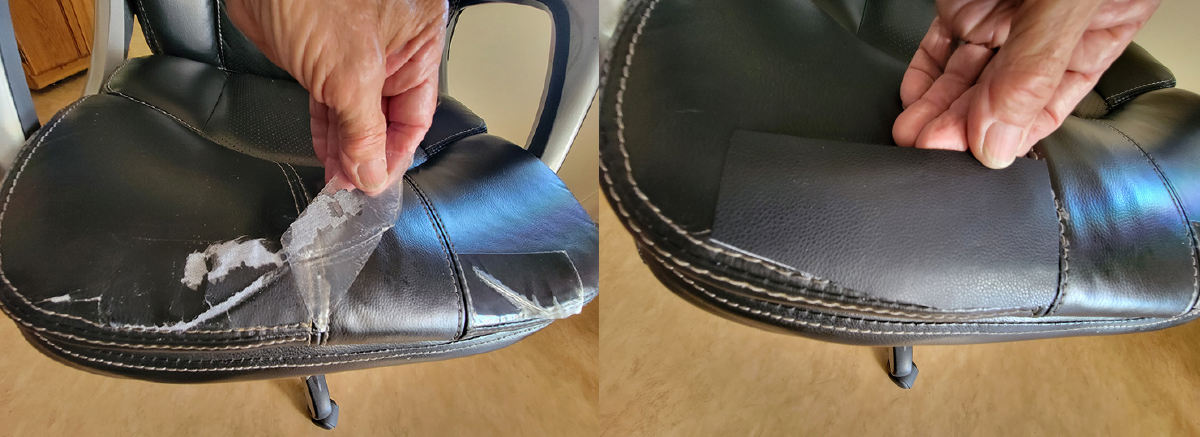
ike many people, I like the feel, comfort and look afforded by leather furniture. This fabric is easy to clean and tends to be resistant to stains. Most RV environments feature Ultraleather, which is one of the most popular fabrics used in the RV industry, and its synthetic (polyurethane) properties are designed to offer good longevity under active use; leather fabric, meanwhile, is usually found in some higher-end motorhomes and fifth wheels. Some owners will ultimately replace furniture with leather counterparts, however — especially office chairs. In all cases, either material takes a beating under RV use, particularly when kids and dogs are part of the traveling family.
Consequently, it’s common to find spots where the fabric has worn, rendering the furniture unsightly, even though most of the seating surfaces are still in good shape. The driver’s seat in motorhome cockpits, for example, usually takes the brunt of the punishment — and ugly wear patterns are common.

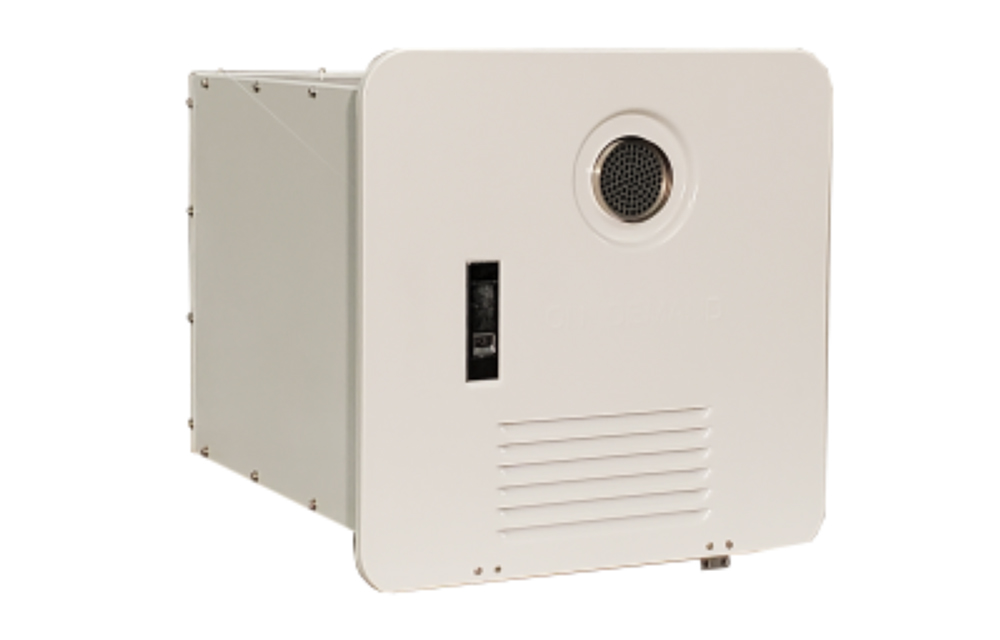
Way Greystone RV Flex Temp On-Demand Water Heater

overing RV tires subjected to direct sun can help prevent all sorts of problems. Those warming rays can cause will premature deterioration of the tires — which of course, can lead to dangerous blowouts while on the road. Even if the tread looks great (and passes the 4/32-inch depth test), driving on tires that are cracked or have been subjected to intense sun for long periods of time — especially if older than six years — is a time bomb waiting to go off. Tires that blow out can result in handling/control issues as well as collateral damage to the RV, which is usually expensive to repair and sidelines the rig for longer than most people expect.



